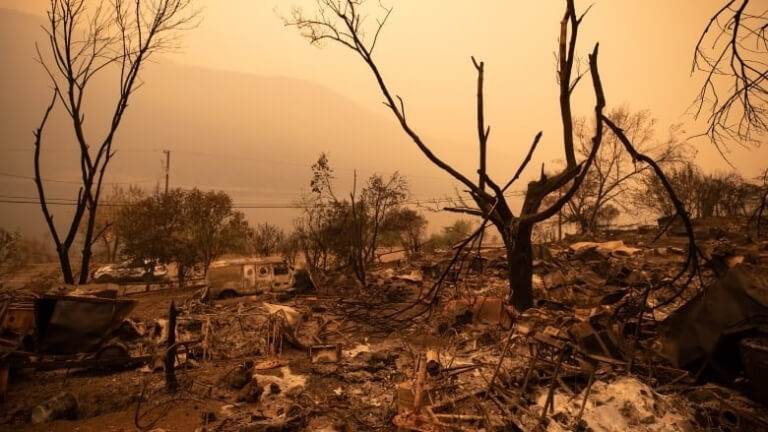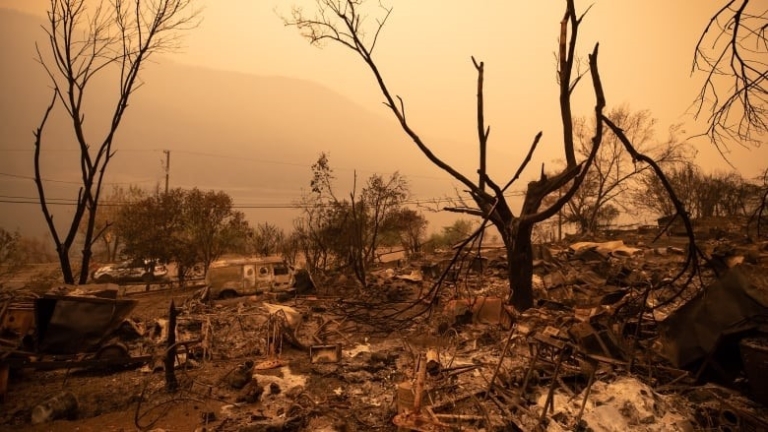Casebook Info
When Canada passed a new law designed to discourage harmful emissions and incentivize climate action, several provinces challenged the law as an unconstitutional intrusion into provincial affairs. Arguing that they could regulate emissions – and “pollution pricing” – on their own, the provinces alleged that the central government had overstepped its powers. But in a victory for the climate, Canada’s Supreme Court held that the drastic and irreversible impacts of climate change merit a collective and centralized governmental approach to regulation.
- Year Filed 2018
- Year of Most Recent Ruling 2021
- Year of Final Ruling 2021
- Jurisdiction Canada
- Court Name Supreme Court of Canada
- Primary Focus Mitigation
- Ruling On Merits
- Plaintiff(s) Province of Ontario et al.
- Respondent(s) Government of Canada
- Outcome N/A
- Organizational leader of the litigation N/A
- Link to the decision/ruling
Background
In 2018, the Canadian government passed the Greenhouse Gas Pollution Pricing Act (“GGPPA”). Enacted in response to climate change and as part of Canada’s efforts to meet its emissions reductions goals under the Paris Agreement, the GGPPA establishes “minimum national standards of [greenhouse gas (GHG)] price stringency to reduce GHG emissions” and “seek[s] to change behavior by internalizing the cost of climate change impacts, incorporating them into the price of fuel and the cost of industrial activity” (Judgment, ¶ 57 and 175). In other words, the law embodies the “polluter pays” principle at a granular level by ensuring that no one is ‘free’ to pollute.
The GGPPA incentivizes climate action and emissions reduction by implementing a federal carbon pollution pricing system that functions as a ‘backstop’ in provinces and territories that lack a pricing system of their own, or where the pricing systems are noncompliant with the federal benchmark. The system has two components. The first is a ‘fuel charge’ applying to fossil fuels such as gasoline and natural gas, while the second is an output-based regulatory system applicable to bigger emitters and industries. Proceeds generated by these two components are returned to the jurisdictions from which they were collected, with the majority going directly to households through “Climate Action Incentive Payments.” The remaining proceeds are directed towards a variety of key sectors, including small businesses, universities and schools, healthcare services, indigenous communities, and municipalities. Proponents of the law have pointed out how this approach enables Canada to meet its environmental and economic goals at the same time.

Despite its promise, the GGPPA encountered a wave of legal challenges following its enactment. Three different Canadian provinces – Ontario, Saskatchewan, and Alberta – challenged the law’s constitutionality.
Ontario filed its Complaint in 2018, alleging that Parliament had exceeded its constitutional authority in passing the GGPPA because regulations of GHG emissions could not be authorized by Parliament’s “national concern” power. Under the Constitution Act of 1867 (Section 91), the Canadian Parliament possesses power over matters of national concern to the “peace, order, and good government” of Canada (also known as the “POGG” power).
According to Ontario, however, the GGPPA’s enactment did not represent a legitimate exercise of POGG power, because the provinces are capable of self-regulating GHG emissions on their own and “there is no need to expand the scope of federal jurisdiction to impose a one-size-fits-all federal carbon price” (Statement of Particulars, “SOP,” 2018). “Expanding the scope of the national concern branch to permit Parliament to regulate the nearly limitless swath of human activity which can result in [GHG] emissions,” Ontario argued, “would represent an unprecedented and unwarranted intrusion into provincial jurisdiction” (SOP, 2018). In support of this argument, Ontario noted that the GGPPA provides for the regulation of 33 different greenhouse gases arising from a wide variety of activities – including home and office heating, transportation, electricity generation, agriculture, and much more.
Moreover, Ontario argued that even if the GGPPA fell within scope of the “national concern” (or “POGG”) power, the Act still represented an unconstitutional tax by virtue of failing to provide an adequate connection between the charges it imposes (e.g., “fuel charges”) and its regulatory purpose.
The Ontario Court of Appeal’s 2019 Judgment –
The Ontario Court of Appeal disagreed with the province’s argument and upheld the GGPPA’s constitutionality. Characterizing the Act as validly “establishing minimum national standards to reduce greenhouse gas emissions,” the Court held that the GGPPA and its federal carbon pricing regime permissibly fell within Parliament’s POGG power. Notably, the Ontario Court afforded the national government even broader powers than did the Saskatchewan Court of Appeals, which had previously ruled favorably on the Act’s constitutionality. The Saskatchewan Court of Appeals confined its characterization to “establishing minimum national [] pricing standards to reduce GHG emissions.” The Court of Appeal for Ontario separately upheld the Act’s output-based large emitters system (Part 2) in addition to the Act’s “fuel charges” (Part 1), which the Court interpreted as a regulatory charge rather than a tax.
The Courts of Appeal in both Ontario and Saskatchewan upheld the Act as constitutional, but the Court of Appeal in Alberta found the GGPPA unconstitutional. The province of British Colombia joined the fray to contest the Alberta court’s finding of unconstitutionality. With the courts split 2-1 on the Act’s lawfulness, the Province of Ontario appealed the decisions to Canada’s Supreme Court.
The Canada Supreme Court’s 2021 Judgment –
In March of 2021, Canada’s Supreme Court upheld the GGPPA’s constitutionality in a 6-3 judgment. Acknowledging that global warming requires collective action and that carbon pollution “knows no boundaries,” the Court found that climate change qualifies as a “national concern” merely through the “pith and substance” of the problem. Therefore, Canada’s Parliament has the authority to address climate change by placing a price on carbon pollution in jurisdictions lacking their own sufficiently stringent systems.

Determining whether an issue qualifies as a “national concern” requires, under Canadian law, the application of a three-part test. First, the issue must be of sufficient concern to the whole country. Second, the issue must possess “a singleness, distinctiveness, and indivisibility.” Third and last, the issue’s scale of impact on provincial jurisdiction must be reconcilable with the division of government powers.
Regarding the first requirement, the Court’s majority found that Canada’s history of climate efforts reflects the central importance of a shared carbon pricing strategy. The Court further held that such a strategy serves a critical function in the country’s response to an “existential threat to human life in Canada and around the world” (Final Judgment, ¶ 167-171). The Court likewise found the second requirement satisfied, finding that the provinces’ inability to comprehensively address the matter through cooperation showed the issue’s “indivisibility.” Lastly, the Court held that the GGPPA’s impact on provincial jurisdiction is sufficiently limited and qualified, since the Act gives provinces considerable flexibility to design their own policies. Moreover, the Court noted that the Act’s minor infringement on areas traditionally governed by the provinces is justified considering climate change’s potentially devastating harms, which will be “borne disproportionally by vulnerable communities and regions” (Final Judgment, at 26).
- 3x In the Canadian Arctic, rates of warming are estimated at nearly 3x the global rate (2019 Judgment, at 5)
- $43 billion (in CA) estimated costs of climate change to Canada’s economy by 2050 if no mitigative action is taken (2019 Judgment, at 7)
Strategies
Applying a developed body of law in the context of climate change

The Canadian Parliament, though not explicitly empowered by the Constitution Act of 1867 to promulgate laws addressing climate change or a healthy environment, was nonetheless able to do so by utilizing its residual power (the “POGG” or “national concern” power) under Section 91 of that Act. Parliament’s use of the POGG power to pass the GGPPA – and, in doing so, begin disincentivizing emissions – marked an innovative use of existing discretionary powers and expanded the Canadian government’s ability to take climate action.
Affirming country / corporate responsibility for their ‘fair share’ of emission reductions, regardless of the actions of other countries or corporations.

The GGPPA represents a realistic and pragmatic example of “fair share” theory – which posits that emitting entities (whether they be corporations, countries, or provinces) should be responsible for reducing their emissions commensurate with certain metrics of fairness (including the amount of pollution they create). The Act’s pricing scheme puts into practice the principle that polluters should have to pay for their contributions to global climate change. It acknowledges that penalizing pollution can help to drive climate-friendly behaviors and changes.
Impacts
The Supreme Court’s GGPPA ruling has created one more favorable stepping stone for Canadian citizens and climate advocates on the path to clean energy and responsible environmental regulation. The judgment itself permitted implementation of the GGPPA across Canadian provinces, enabling a pricing system that will help to disincentivize GHG emissions. The Court’s rationale also provides compelling arguments for expanding climate regulation and doing so in a balanced manner. By centering environmental justice as a key principle behind their decision, the Supreme Court has helped to mainstream tenets of fundamental fairness in the domains of pollution, climate adaptation, and mitigation. The GGPPA’s emphasis on internalization of pollution costs will mean that polluters end up paying the price, instead of the communities most vulnerable to climate change.
Lastly, the Court’s ruling also provides strong arguments for collective action and the possibility of using residual federal powers to address the existential threat of climate change. The GGPPA also proves to skeptics that protecting the environment does not have to be incompatible with strengthening the economy.



